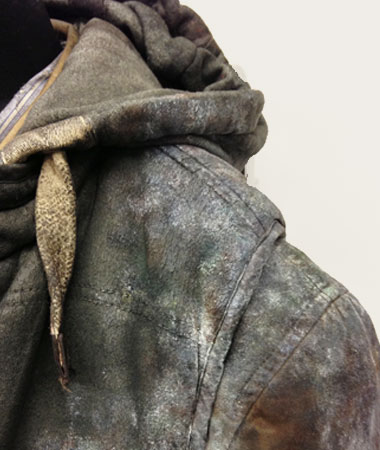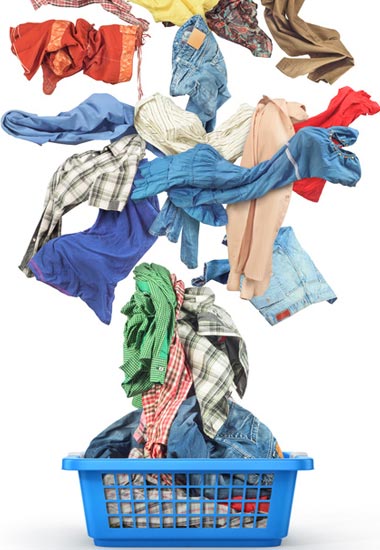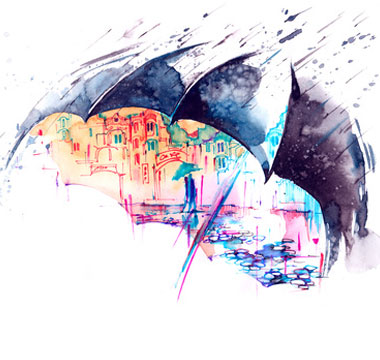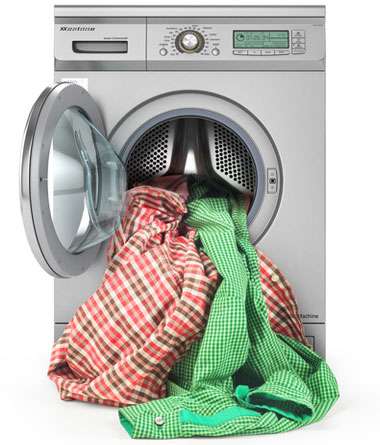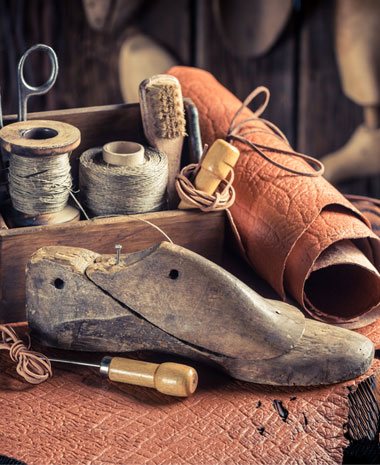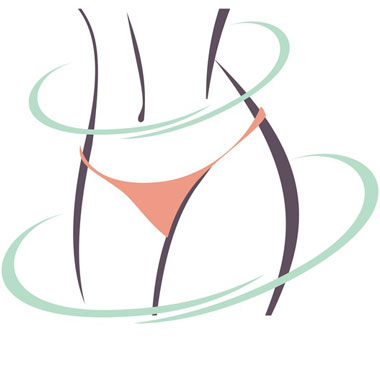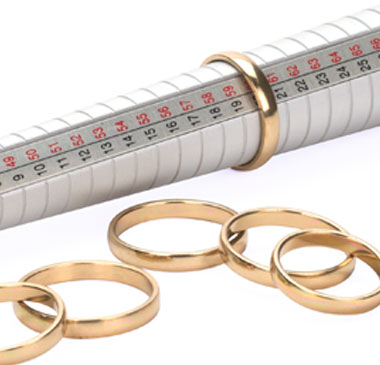PATIN-A Blog – Based on Experience
This blog shows how to patinate correctly, gives tips for the work in the costume department, shows the newest trends and introduces products and their use.
The main focus lies on costume distressing, leather working and textile dyeing. We show trends of the trade and aids for costume design.
Costume distressing for the TV mini-series "Generation War" ("Our mothers - our fathers")
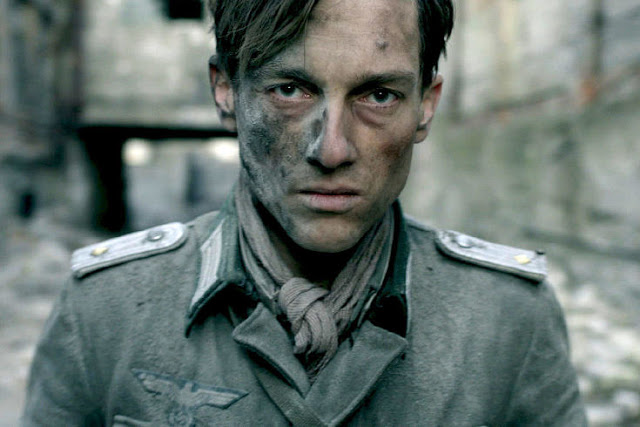
Uniforms for a TV-Mini Series
From January until the end of March 2011 I, Jürgen Knoll, along with a team of young and creative co-workers, have patinated and aged the uniforms for the ZDF mini-series "Generation War" (German title: Unsere Mütter, unsere Väter, "Our mothers, our fathers").
The costume designer Wiebke Kratz (famous for: Die Flucht, Bonhoeffer, Schicksalsjahre, R.I.S. - Die Sprache der Toten) wanted to create a costume design for "Generation War" which shows uniforms that have been worn for a long time already and tell their own story, thus supporting the actor's play.
When Wiebke Kratz asked me to work for her as a breakdown artist / textile artist* it had already been made clear that almost all the uniforms would have to be returned thoroughly cleaned and without any trace of our distressing products (soiling/aging) to the uniform costume stock.
This is particularly hard to achieve, as we couldn't use colour that would stick permanently to the costumes.
The costume breakdown would have to be washed out completely or dry cleaned after shooting.
More than 3000 costumes
Which is no problem if you only have to age ten costumes - but we had to age thousands of costumes and costume parts within two and a half month!
In the three parts of the series there were 3000 extras in uniform and in addition to that the (several) costumes of the main characters.
For instance: Friedhelm wears two different uniforms in the film. Since stuntmen also act as his double and given that there were a lot of explosions/special effects the costume crew needed each uniform model eight (8) times on the set. Almost all the actors in uniform in this film had several costumes which all had to be treated identically.
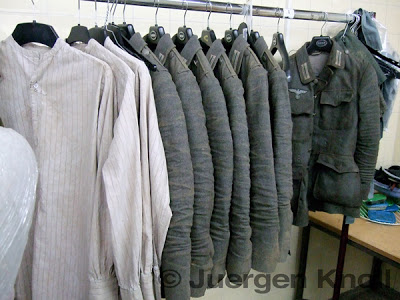
Recherche für die Arbeit
Unfortunately the uniform costume stock could not supply already worn uniforms. Almost all the uniforms had to be especially made in Poland by 'Hero Collection'.
And every tiny little detail of the uniform was so important to the costume designer! The authentic fabric quality just as the right button, the manufacture just as the application of decorations and badges of rank.
Even the colour and soles of boots and shoes were completely genuine!
Using photo material we researched very accurately how battered uniforms looked in a specific year of the war or situation.
To give you an idea what costume distressing is about - here's the uniform jacket from 1944 on (patinated and unpatinated) of the main character Friedhelm (Tom Schilling):
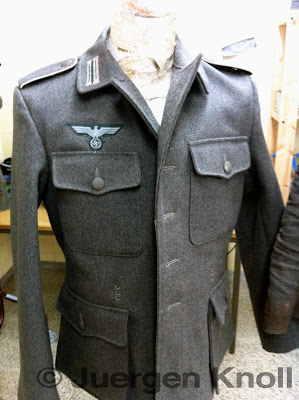
unpatinated uniform - character Friedhelm
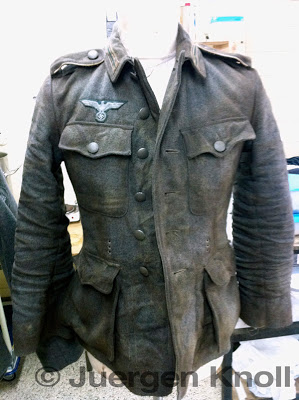
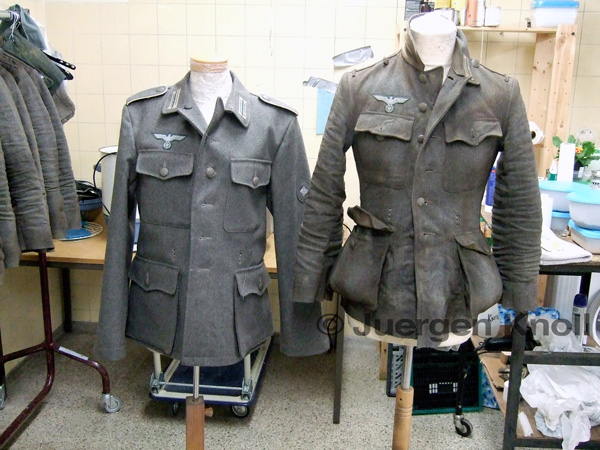
 |
| Rolle: Wilhelm // © ZDF / David Slama |
Vorbereitung und Entwicklung des Patinier-Equipments
In preparation of UMUV PATIN-A developed a special water soluble colour (PATIN-PASTE) with which costumes could be painted. The paste was fixed with PATIN-CREME and PATIN-WAX.
In the meantime this colour is part of the PATIN-A-shop range.
The advantage of PATIN-PASTE is that it penetrates the fabric and does not remain on the surface, like distressings sprayed with the Airbrush.
You have to use a large paintbrush - that is the only way the colour will penetrate the fabric. Before touching the costume the brush has to be streaked out on a towel.
Another advantage of this technique is the rapidity with which complete costumes can be distressed.
You can see this technique rather well on this russian cotton uniform:
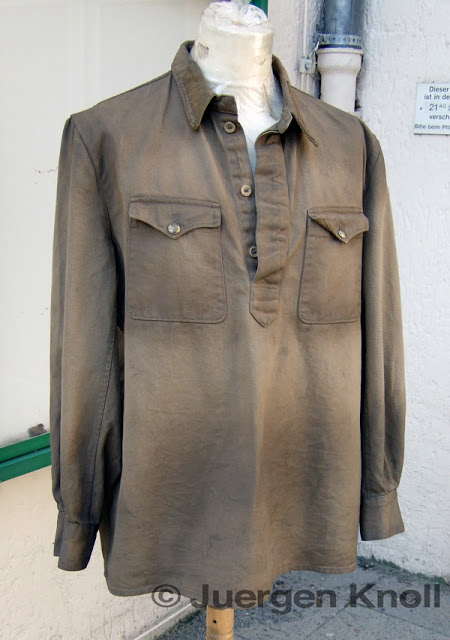
Patinating of a shirt with PATIN-PASTE
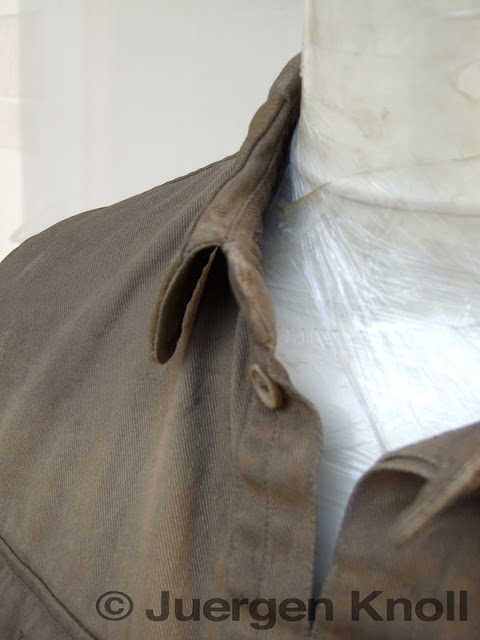
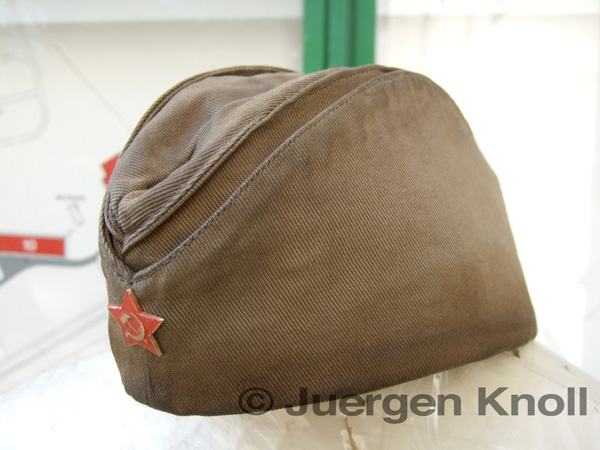
Zuerst Altern - dann Malen
Coats, jackets and trousers are not just painted - they were aged before painting to get the typical creases.
Within our department one group first washed the costumes or watered them .These were then hanged up in a special way and loaded with weights to dry.
After drying another group removed the fluff on certain spots (partly with burners and razors).
And after a lot of preparation work the uniforms could finally be 'soiled'.
Quite a few costumes were 'stone-washed' before they were soiled. You do that in order to give the cotton/linen fabrics this aged look (as is frequently done in fashion with blue jeans).
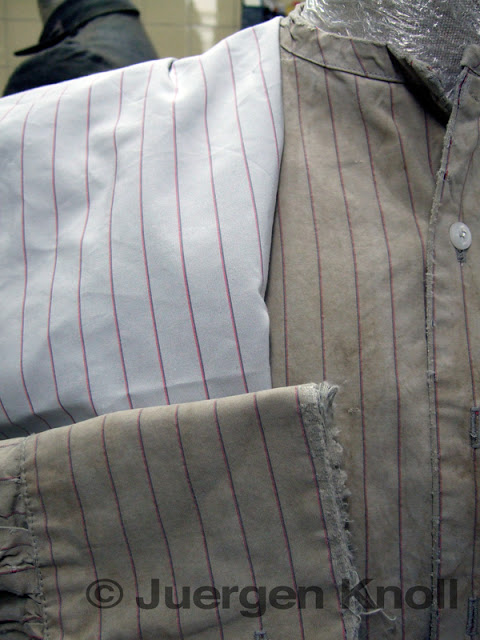
Original fabric & fabric made to a shirt after stone-washing (Shirt Viktor / Poland)
Die (fast ausschliesslich) neuen Stiefel und Schuhe wurden auch 'getragen gemacht'.

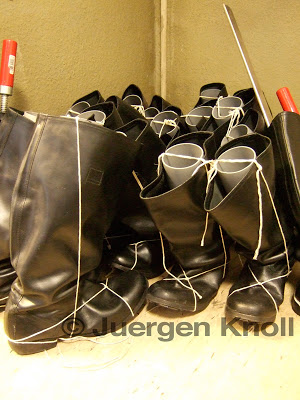
Boots being shaped


Underwear, shirts, sweaters, scarves, leg compresses, gloves etc. are also part of the uniform and complete the look.
This huge lot of costume parts also went through our hands.
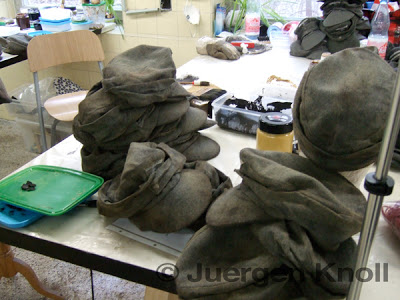
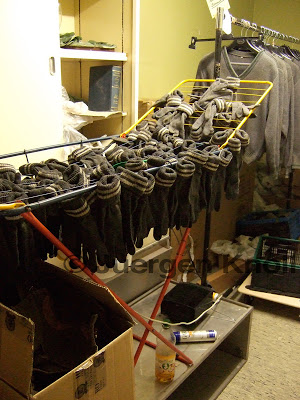
Here are some impressions of our distressings:
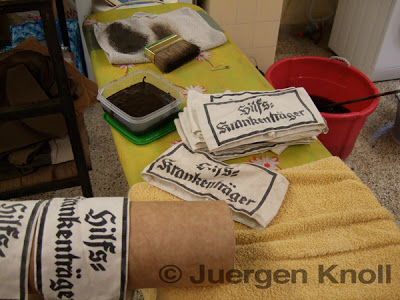
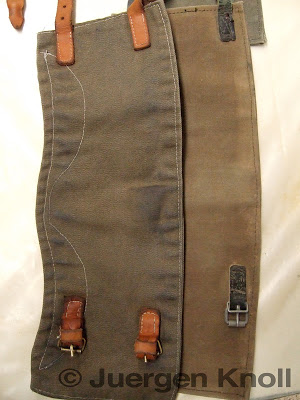
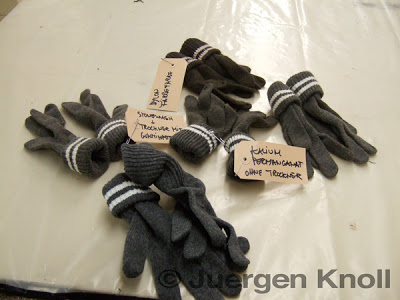
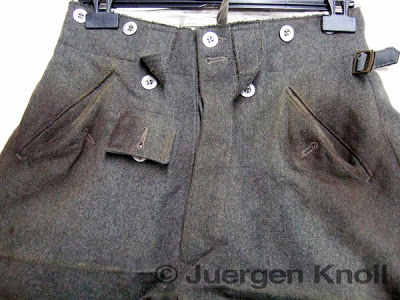
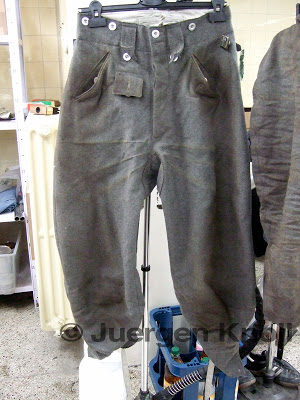
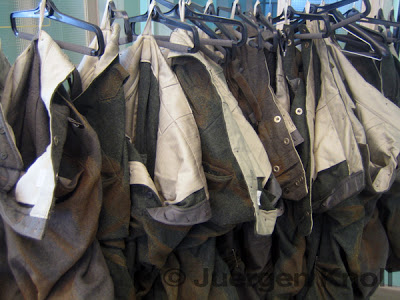
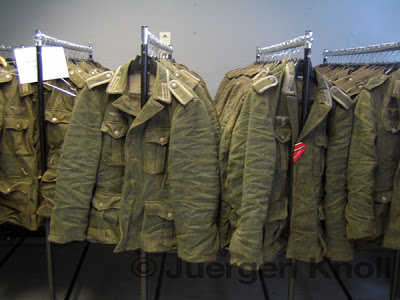
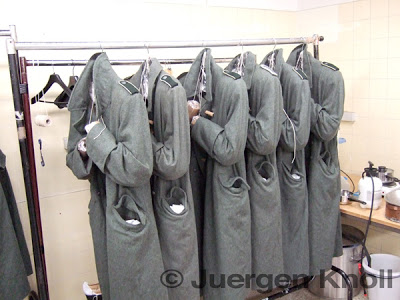
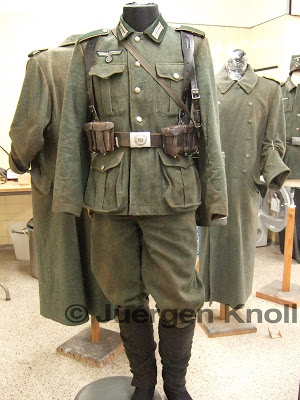
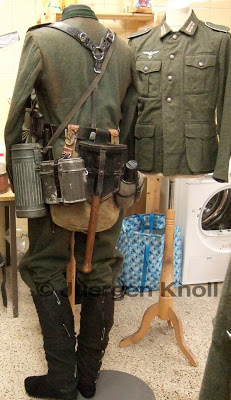
• • • • • • • • • • • •
* Begriffserklärung:
* The Ager/Breakdown Artist works on fabrics, costumes, shoes, hats and accessories etc. in order to make them 'fit' for the film. Clothing does not necessarily have to be destroyed - you can also age it very gently and thus bring the costumes 'to life'.
Very often you will find someone on the set that will do the finishings on the spot and/or the distressings which need renewing or refreshing.
* The Textile Artist's job is to transform fabrics, materials and costumes through dyeing, felting, pleating, printing and aging.
 We ship worldwide
We ship worldwide Top customer satisfaction!
Top customer satisfaction! Many payment options
Many payment options
